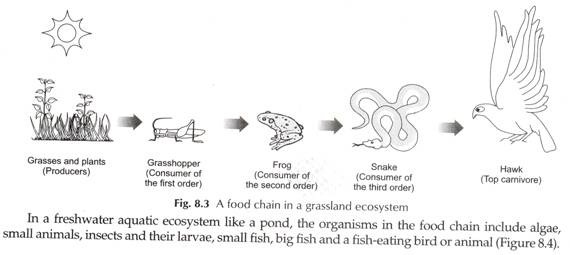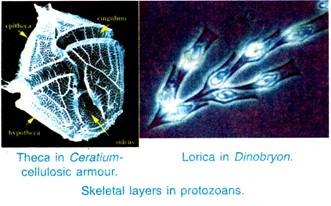Food Chain in Ecosystem!
For an ecosystem to work there has to be a flow of energy within it. The organisms of the ecosystem need energy in the form of food.
The ultimate source of this energy is the sun. Producers like green plants trap solar energy and convert it into the chemical energy of food. When a primary consumer eats the producer, a part of this energy is passed on to it.
The primary consumer is then eaten by a secondary consumer. And the secondary consumer may be eaten by a tertiary consumer, and so on. In this way energy gets transferred from one consumer to the next higher level of consumer. A series of organisms through which food energy flows in an ecosystem is called a food chain. It may also be defined as follows.
A food chain in an ecosystem is a series of organisms in which each organism feeds on the one below it in the series.
In a forest ecosystem, grass is eaten by a deer, which in turn is eaten by a tiger. The grass, deer and tiger form a food chain (Figure 8.2). In this food chain, energy flows from the grass (producer) to the deer (primary consumer) to the tiger (secondary consumer).
A food chain in a grassland ecosystem may consist of grasses and other plants, grasshoppers, frogs, snakes and hawks (Figure 8.3).
In a freshwater aquatic ecosystem like a pond, the organisms in the food chain include algae, small animals, insects and their larvae, small fish, big fish and a fish-eating bird or animal (Figure 8.4).
A food chain always begins with producers. Herbivores (plant-eaters) come next in the chain. They are consumed by carnivores (flesh-eaters). A few food chains can be long and may extend to the fourth, fifth or even sixth order of consumers.
Some common food chains are mentioned below:
Plants → Deer → Lion
Plants → Worm→ Bird → Cat
Plants→ Grasshopper→ Frog→ Snake→ Hawk
Algae→ Small→ animal → Small fish → Big fish —> Bird


